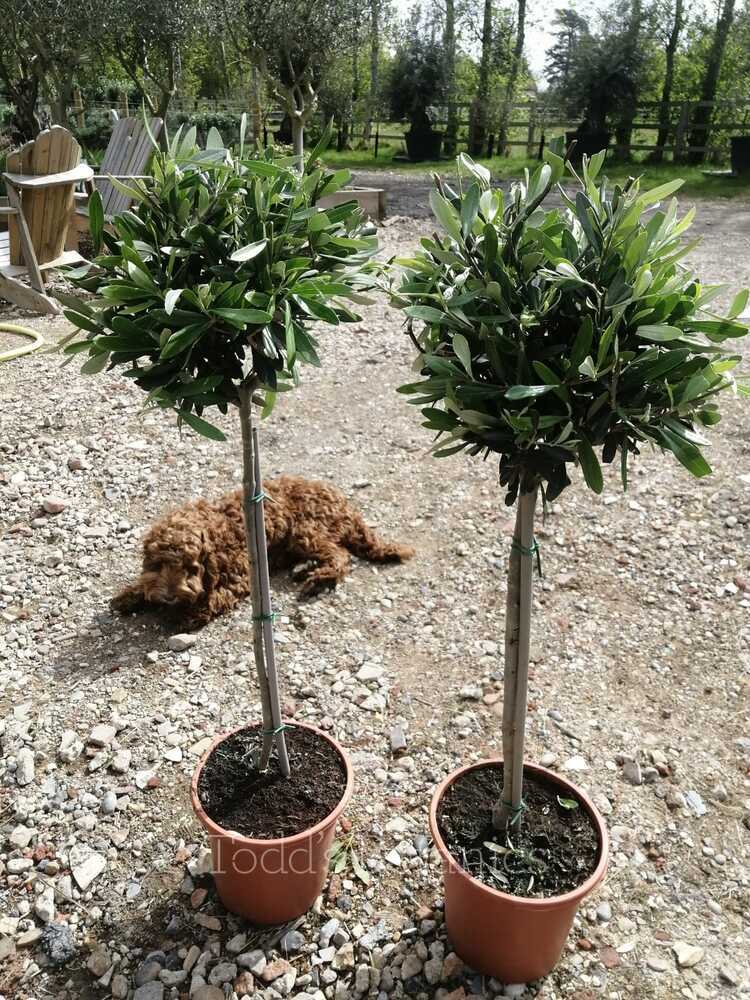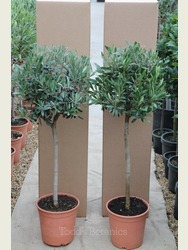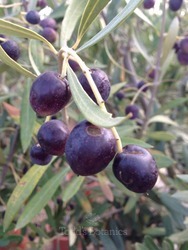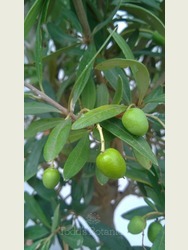Pair of 1/2 Standard Olive Trees
Quantity: 2
Overall Height inc. pot: 100+cm
Trunk Height: 55-60 cm
Head Diameter: 25-30 cm
All pairs dispatched will be matched as far as possible.
Two half standard Olea europaea
A Pair of Olives look wonderful either side of the entrance to a garden or either side of a sunny doorway. They also make a wonderful gift for someone special. We hand select all of our olive trees from the colder regions of Northern Spain and Italy. This ensures they are as cold tolerant as possible and therefore well suited to the inclement UK climate.
Olive trees will thrive in a sunny position, with good drainage either in a container or in the ground. We supply full care instructions with all of our Olive Tree orders with information on aftercare including feeding, pruning and watering.
Where more than one tree is ordered we will do our best to pair up trees to work well together. We recommend http://www.vasotoscano.com/ for fabulous frostproof terracotta pots.
There are currently no reviews for this product.
Be the first the write a review.
Please Log in or Register to write a review-
Situation Open Close
Olive trees love a sunny, sheltered well drained site; a south facing position is ideal, however it’s not essential as long as there is lots of sunlight and the soil is well drained. A well drained soil can be achieved by digging in lots of grit before planting. Wind is not a problem for olives - they can even cope in a seaside location with salt laden winds. The same conditions apply for container grown olives, potting up with a mixture of John Innes No.3 and multipurpose compost, ideally with some added grit for drainage.
-
Feeding Open Close
To help promote new growth, flowering and fruiting, give a feed with a slow release general purpose fertiliser around the base of the plant in spring. In the growing season an occasional feed with a liquid fertiliser is beneficial. Stop feeding after August as this will promote soft new growth which could be damaged in winter. It is more important to feed container planted trees as the nutrients are soon depleted from the soil after a growing season.
-
Pruning Open Close
Olives respond well to pruning; to help keep in shape and to promote new growth. A light prune in spring will help shape the tree after the winter, cut out any dead, damaged or diseased growth. In summer a heavier prune can be done if required, olives can put a lot of growth on during this time and might need to be kept in check.
-
Watering Open Close
If planted into a container make sure the tree is well watered during the growing season as the roots cannot search for water like they do in the ground, especially so if in terracotta as this bakes the soil in summer. In the first year of planting, olive trees in the ground need to be kept well watered too, however once established they can tolerate some small periods of drought but prefer to be watered occasionally.
-
Pests and Diseases Open Close
Generally pest free, occasionally olive trees can be prone to Peacock or Black Spot or Woolly Aphid. Black Spot (small brown circles on leaf, leaf turning yellowy brown) can be treated by spraying with a fungicide. Woolly Aphid (white fluffy like substance appearing on leaf axils and pruning cuts) needs treating with an insecticide. Follow manufacturer’s instructions for best application.
-
Winter Care Open Close
Olive trees are surprisingly very hardy; large plants can be hardy to around -15C (and lower), as long as the compost/soil is well drained. Mature plants will be evergreen to around this temperature, younger plants are more susceptible to leaf loss if the temperatures are continually very low. Small plants can be over-wintered inside to help retain leaves; maximise ventilation and light and water occasionally. They soon start to regain their leaves once the spring has arrived. Watch out for the roots of containerised plants becoming waterlogged.





